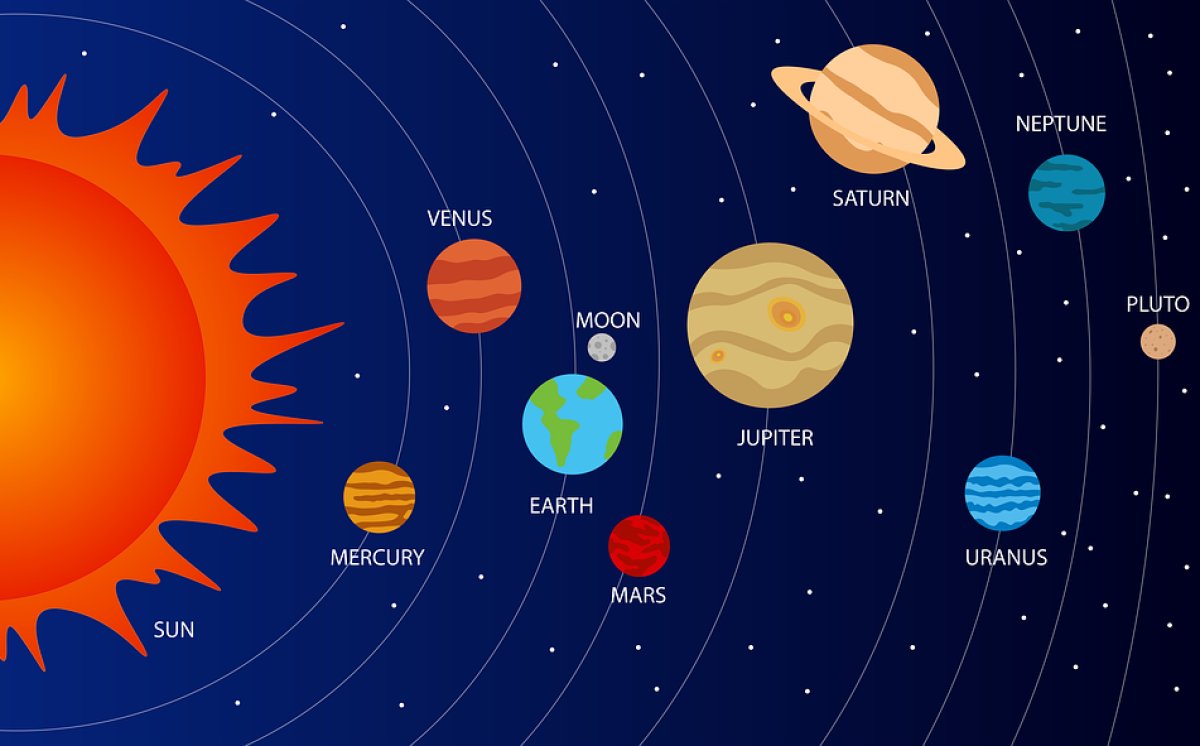A Glance at the Outer Planets of the Solar System
Planet luar Tata Surya merupakan planet yang terletak setelah sabuk asteroid. Planet-planet tersebut antara lain Yupiter, Saturnus, Uranus, dan Neptunus.

Planets in the Solar System can be divided into two groups based on their location in the asteroid belt. The asteroid belt itself is a collection of asteroids that orbit the Sun, and their orbits are between the planets Mars and Jupiter.
The inner planets are planets whose orbits are located between the Sun and the asteroid belt, namely Mercury, Venus, Earth and Mars. Meanwhile, the outer planets are the planets whose orbits are after the asteroid belt, namely Jupiter, Saturn, Uranus and Neptune.
A Brief Explanation of the Planets of the Outer Solar System
The following is a brief explanation of the outer planets of the Solar System, consisting of Jupiter, Saturn, Uranus and Neptune. In addition, there is also an explanation about Pluto, which was once considered a planet.
1. Jupiter, the largest gas giant planet in the Solar System
Jupiter is the fifth closest planet to the Sun. This planet is the largest planet in the Solar System. They are also called Jovian planets or outer planets. Jupiter has a mass of one-thousandth the mass of the Sun and two and a half times the mass of all the other planets in the Solar System.
Jupiter is surrounded by thin rings and a strong magnetosphere. In addition, there are 67 natural satellites in the vicinity, including four large satellites called Galilean satellites, which were discovered in 1610 by Galileo Galilei. This planet has been known since ancient times and was named after the mythological Roman god Jupiter.
2. Saturn, the Ringed Planet
Saturn is the second largest planet in the Solar System after Jupiter. This planet is known as a ringed planet. Saturn has thousands of rings surrounding the planet. It is thought to be chunks of meteorite ice that form these rings.
Saturn has 56 natural satellites, seven of which are quite large and spherical under the force of their own gravity. These satellites are Mimas, Enceladus, Tethys, Dione, Rhea, Titan, and Tethys. Another unique fact about Saturn is that it rotates in a very short time, only 10 hours, 40 minutes 24 seconds.
3. Uranus, the Ice Giant Planet
Uranus is the seventh planet from the Sun and the third largest planet in the Solar System. This planet is named after the Greek god Uranus. Astronomers call Uranus an ice giant because its atmosphere contains a lot of ice, such as water, ammonia, methane and hydrocarbons.
Uranus was the first planet discovered using a telescope in 1781 by Sir William Herschel. Its very low atmospheric temperature reaches -224 degrees Celsius, making it the coldest planet in the Solar System.
4. Neptune, Blue Planet Apart from Earth
Neptune, the furthest planet from the Sun and the eighth planet in the Solar System has a bluish appearance caused by methane in the planet's outer regions. This planet has a mass 17 times greater than Earth and revolves around the Sun for 164.8 years.
Neptune has a Great Dark Spot in its southern hemisphere, which is similar to the Great Red Spot on Jupiter. The large dark spot is a weather pattern produced by very strong winds, with speeds reaching 2,100 km/hour.
5. Pluto, a dwarf planet with a tilted orbit
Pluto, a dwarf planet in the Kuiper belt and the first trans-Neptunian object discovered by humans has an eccentric and tilted orbit. Initially, Pluto was also considered a planet, but now it is more accurately classified as a planetoid or planetesimal.
Trans-Neptunian objects are objects in the Solar System with all or most of their orbits passing through Neptune's orbit. Meanwhile, the Kuiper Belt is the name for this part of space. Thus, Pluto and its moon Charon are trans-Neptunian objects.
Pluto is 29.6 to 49 AU or 4.4 to 7.3 billion kilometres from the Sun. Uniquely, Pluto has an eccentric and tilted orbit, so that Pluto is 29.6 to 49 AU or 4.4 to 7.3 billion km from the Sun. This means that there are times when Pluto is closer to the Sun than the planet Neptune, which is 30.4 AU farthest from the Sun.
The explanation of the outer planets of the Solar System, plus the explanation of Pluto, which is not currently classified as a planet above, is very brief. But at least it can give you a general idea about the planets in the outer Solar System.
